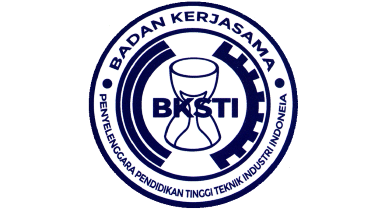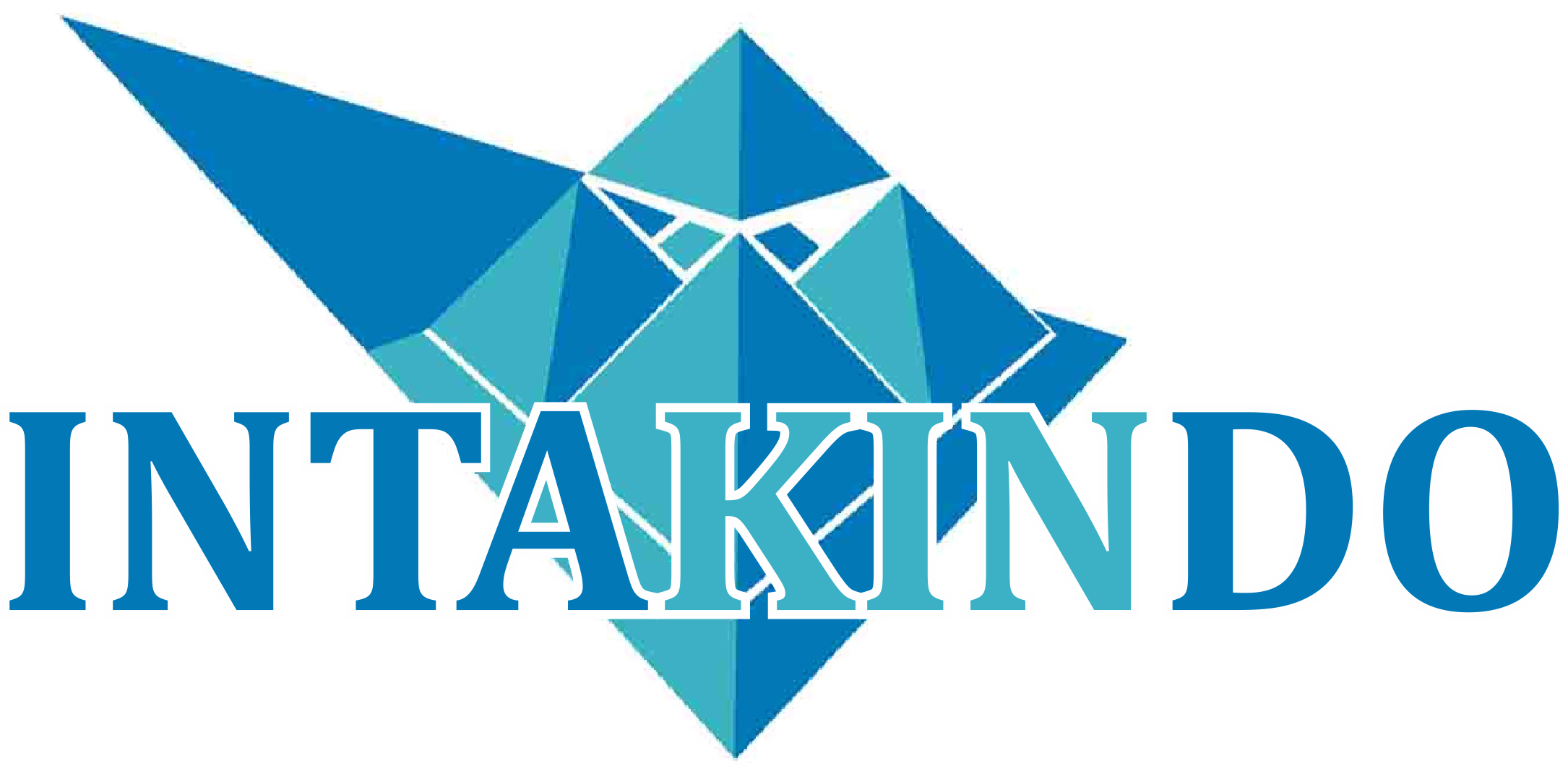Revolusi Industri 4. 0 Berbasis Revolusi Mental
DOI:
https://doi.org/10.30737/jatiunik.v1i2.117Keywords:
Industrial Revolution, Mental Revolution, SynthesisAbstract
The industrial revolution has changed the way people work into automation / digitalization through innovations. Industry players play an active role as an organizational entity that has a vision of achieving profits. The industrial revolution is based on a mental revolution in which in this paradigm there are major changes in the mental structure that is built on three things, namely the way of thinking, believing and how to behave. Mental revolution is balanced with an education system and increased self-potential through training to respond to the era of globalization with the character of the industrial revolution 4.0 where in this era new literacy is needed by using data analysis thoroughly and making conclusions to be related to communication skills, collaboration, critical thinking, creative and innovative. The existence of the industrial revolution provides benefits in increasing savings and minimizing consumption because in this case there are opportunities for e-commerce and digital economic developers for industry players. Synthesis of the industrial revolution 4.0 will give birth to a prosperous society in development, while the mental revolution breeds qualified and superior humans.
Â
Revolusi industri telah mengubah cara kerja manusia menjadi otomatisasi/digitalisasi melalui inovasi-inovasi. Para pelaku industri berperan secara aktif sebagai entitas organisasi yang memiliki visi dalam meraih keuntungan. Revolusi industri berjalan dengan dilandasi revolusi mental dimana dalam paradigma ini terdapat perubahan besar dalam struktur mental yang terbangun atas tiga hal yaitu cara berpikir, meyakini dan cara bersikap. Revolusi mental diimbangi dengan sistem pendidikan dan peningkatan potensi diri melalui pelatihan untuk menyikapi era globalisasi yang berwatak revolusi industri 4.0 dimana dalam era ini diperlukan literasi baru dengan menggunakan analisa data secara menyeluruh serta membuat konklusi agar terkait dengan kemampuan komunikasi, kolaborasi, berpikir kritis, kreatif dan inovatif. Adanya revolusi industri memberikan keuntungan dalam meningkatkan tabungan dan meminimalkan konsumsi karena dalam hal ini terdapat peluang e-commerce dan pengembang ekonomi digital bagi para pelaku industri. Sintesis revolusi industri 4.0 akan melahirkan masyarakat sejahtera dalam pembangunan, sedangkan revolusi mental melahirkan manusia yang berkualitas dan unggul.
References
R. Nur and Muhammad, Opini Harian Republika: Menghadapi Era Disrupsi. Jakarta, 2017.
S.-D. Cho, “The Ministry in the Age of the Fourth Industrial Revolution,†Theol. Prax., vol. 61, pp. 621–646, 2018.
K. Chun, H. Kim, and K. Jang, “Analysis on Research Level of the Five Major Platform Technologies Related to the Fourth Industrial Revolution,†2017.
Bekraf, “Kegiatan BEKRAF dan BPS Rilis Buku Statistik Ekonomi Kreatif,†bekraf.go.id. .
Badan Pusat Statistik, “Laporan Perekonomian Indonesia 2019,†Lap. Perekon. Indones. 2019, vol. 04, no. 01, pp. 1–224, 2019.
B. Indonesia, Publikasi Laporan Perekonomian Indonesia. Bank Indonesia, 2018.
B. J. Smales, Economic History, 1st ed. Elsevier Ltd, 1975.
M. Kinsey, “Digital tecnology menuju revolusi industri 4.0,†Digit. Tecnol., 2016.
M. A. Heras and H. Dröge, “Exploring Innovation Measurement Approaches in the Service Sector: Insights from the Hospitality Industry,†2009.
D. H. Wibowo, Z. Arifin, and . Sunarti, “Analisis Strategi Pemasaran Untuk Meningkatkan Daya Saing UMKM (Studi pada Batik Diajeng Solo),†J. Adm. Bisnis, vol. 29, no. 1, pp. 59–66, 2015.
G. Stonehouse and B. Snowdon, “Competitive advantage revisited Michael Porter on strategy and competitiveness,†J. Manag. Inq., 2007.
Nurlaely, A. Sularso, and H. Panjaitan, “Influence of Customer Relationship Management and Product Innovation on Market Orientation, Competitive Advantage in Improving the Marketing Performance of Food Industry Small Businesses In East Java,†Int. J. Bus. Manag. Invent., vol. 8, no. 04, p. 13, 2019.
F. D. Davis, “User acceptance of information technology: system characteristics, user perceptions and behavioral impacts,†Int. J. Man. Mach. Stud., vol. 38, no. 3, pp. 475–487, Mar. 1993.
M. D. Angelica et al., “Determinants of Time Allocation across the Lifespan A Theoretical Model and an Application to the,†PLoS One, 2012.
C. Wolfe, Learning and Teaching on the World Wide Web, 1st ed. Academic Press, 2001.
S. Mao, “Teaching and learning with African scientists,†Elsevier.com, 2015. .
M. Hepworth and G. Walton, Teaching Information Literacy for Inquiry-Based Learning, 1st ed. Chandos Publishing, 2009.
Youthmanual, “Human- Computer Interaction,†Youthmanual, 2014. [Online]. Available: Youthmanual. [Accessed: 07-Jul-2019].
L. F. de Souza Cardoso, F. C. M. Q. Mariano, and E. R. Zorzal, “A survey of industrial augmented reality,†Comput. Ind. Eng., vol. 139, no. October 2019, p. 106159, 2020.
H. Panetto, M. Lezoche, J. E. H. Hormazabal, M. del Mar Eva Alemany Diaz, and J. Kacprzyk, “Special issue on Agri-Food 4.0 and digitalization in agriculture supply chains - New directions, challenges and applications,†Comput. Ind., vol. 116, p. 103188, 2020.
S. Doltsinis, P. Ferreira, M. M. Mabkhot, and N. Lohse, “A Decision Support System for rapid ramp-up of industry 4.0 enabled production systems,†Comput. Ind., vol. 116, p. 103190, 2020.
J. Hendler, Artificial Intelligence Planning Systems, 1st Editio. Morgan Kaufmann, 2014.
M. À. Piera and A. Petrillo, “Special issue on ‘Industrial and transport business dynamic ecosystems for decision making,’†Comput. Ind. Eng., vol. 139, no. November 2019, p. 106172, 2020.
D. Mayasari and F. Saftarina, “Ergonomi sebagai Upaya Pencegahan Musculoskeletal Disorders pada Pekerja,†JK Unila, 2016.
F. Tania and M. Ulkhaq, “Pengukuran dan Analisis Produktivitas di PT. Tiga Manunggal Synthetic Industries dengan Menggunakan Metode Objective Matrix ( OMAX ),†Ind. Eng. Online J., vol. 5, no. 4, pp. 1–9, 2016.
Wordlcat.org, “Productivity Improvement in Construction,†https://www.worldcat.org/, 2017. [Online]. Available: https://www.worldcat.org/title/productivity-improvement-in-construction/oclc/17731702.
M. Bahrudin and H. C. Wahyuni, “Pengukuran Produktivitas Kerja Karyawan pada Bagian Produksi dengan Menggunakan Metode Objective Matrix (OMAX) Dan Root Cause Analyze (RCA),†PROZIMA (Productivity, Optim. Manuf. Syst. Eng., vol. 1, no. 2, p. 116, 2018.
N. Y. Astana, “Perencanaan Persediaan Bahan Baku Berdasarkan Metode MRP (Material Requirements Planning) I,†J. Ilm. Tek. Sipil, 2007.
E. Bessonova and K. Gonchar, “How the innovation-competition link is shaped by technology distance in a high-barrier catch-up economy,†Technovation, vol. 86–87, pp. 15–32, 2019.
E. Surya, “Revolusi Mental,†efansuryafileswordpress.com, 2015. .
BKSTI, “BKSTI.†2017.
M. J. N. Cahyono and M. Ir. Lantip Trisunarno, “Penerapan Metode Value Engineering Pada Pengembangan Desain Jamban Sehat dan Ekonomis ( Studi Kasus : Pengusaha Sanitasi Jawa Timur ),†J. Teh. Its, 2012.
V. Bertolini, “APLIKASI VALUE ENGINEERING PADA PROYEK PEMBANGUNAN GEDUNG ( Studi Kasus Hotel Grand Banjarmasin ),†J. IPTEK, 2016.
M. Fadjar, Holistika Pemikiran Pendidikan. Jakarta: Raja Grafindo Persada, 2005.
H. Arif, Memahami Business Plan, 1st ed. Jakarta: Grasindo, 2010.
S. Mulyani, “Bicara Era Digital: Akan Ada Pergeseran Jenis Tenaga Kerja,†Detiknews, 2018. .
Downloads
Published
Issue
Section
License
Information regarding Copyright and Licensing at JATI UNIK as follows:
- Licensed Use of Non - Commercial Articles will be governed by the Creative Commons Attribution license, which is featured on the Creative Commons Attribution Non-Commercial Share A Like 4.0 International License.
- The author guarantees that the articles published through JATI UNIK are original and do not contain statements that violate the law do not violate others' rights are subject to copyright, which is held exclusively by the author and free from the rights of third parties. The author is allowed to quote from various sources used for research and not to harm any party.
- JATI UNIK disseminates articles published with the rules set by Creative Commons. UNIK JATI license allows users to copy, distribute, display, and work for non-commercial purposes. Users also need to connect authors and JATI UNIK with the distribution of articles in journals.
- The Author rights, namely copyrights, ownership rights, patents, rights to use the substance of articles in the future, rights to reproduce articles for personal purposes and not to be traded, rights to conduct personal archives, rights to contract used for the non-exclusive distribution of articles published in the form a book and acknowledge the initial publication of the article originating from JATI UNIK.
- Suppose articles published by the author through JATI UNIK are compiled with other authors. In that case, it is necessary to create a form containing the authority of all authors involved in the article's production by including the agreement agreed upon by all authors in the article.
- The next point is, the agreement can be terminated if the author or JATI UNIK violates the agreement and cannot make repairs to the customer within a maximum of 2 months after being given information asking for the violation to be corrected. If there is no violation of the agreement, the license will automatically terminate and affect UNIQUE JATI UNIK.
- Regarding royalties, so far, if it is following applicable legal regulations, the author will waive his right to collect royalties on articles that have been licensed by JATI UNIK.
- In publishing the article, the editorial process is successful. JATI UNIK will continue it. JATI UNIK has the right to adjust articles related to punctuation, spelling, capital letters, references used, and usage adapted to JATI UNIK. The author acknowledges that the article can be published and accessed free of charge by the public.
Deprecated: json_decode(): Passing null to parameter #1 ($json) of type string is deprecated in /home/ojs.unik-kediri.ac.id/public_html/plugins/generic/citations/CitationsPlugin.php on line 68















